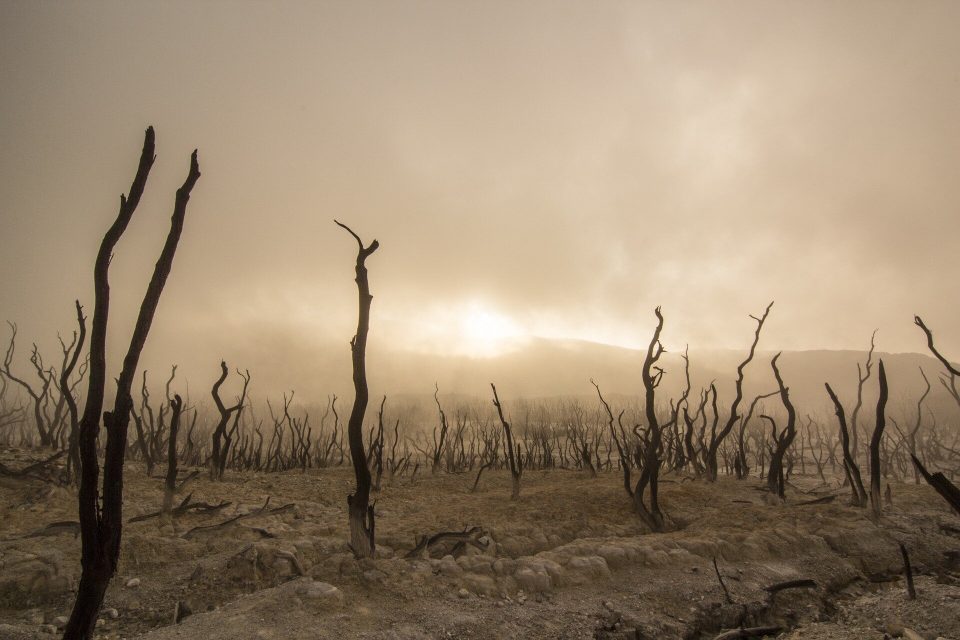Credit: CC0 public domain
Two model studies document the probability of climate falls in the Earth subsystem.Survey results support the urgency of limiting CO2 Emissions as a sudden climate change are less predictable and can be wider than expected within the climate system. This work, part of a European TiPES project coordinated by the University of Copenhagen in Denmark, was carried out by Professor Michael Ghil of Ecole Normale Supérieure in Paris, France, and co-authors of the Royal Institute of Meteorology in Belgium and the University of Parthenope in Italy. I did.
The tip may be imminent
It is often assumed Climate change Gradually progress as you increase the amount of CO2 In the atmosphere. But in the last 15 years, the Earth’s climate system or its subsystems (sea ice cover, monsoon system, Ocean current— May shift suddenly without warning as CO2 The level goes up. This is known as climate change.
Currently, two studies from the European TiPES project add evidence that falls are imminent and may be more extensive in the climate system than would normally be expected.
El Nino Tips Meteorological System
In the first study, the author was a combined model of the ocean and atmosphere, with a mid-latitude wind system in Europe and North America, and El Nino’s strength. In other words, the climatic phenomenon El Nino, where heat accumulates on the surface of the eastern tropical Pacific, is separate from one system of US mid-latitude wind systems.
Such stochastic climate change complicates forecasting. This is generally based on the assumption that the climate system will gradually change in a more predictable way. The findings were co-authored with Stéphane Vannitsem and Jonathan Demaeyer of the Royal Institute of Meteorological Research in Belgium. Journal of Advances in Modeling Earth SystemsTherefore, explain why it has been difficult to accurately predict precipitation and temperature patterns during and after El Nino.
Tilt the Gulf Stream
Another result is about chips by rate. This type of climate change is not because, like CO, it has reached a certain threshold level.2 This is because the rate of change is too fast for the system to evolve gradually, not at atmospheric levels.
This study was co-authored with Stephano Pierini at Partenope University in Naples. Science reportFor the first time discovered a velocity-induced fall in a simplified model of wind-induced ocean circulation. In this model study, the Gulf Stream, which distributes heat to the North Atlantic and plays an important role in keeping temperatures in Western Europe relatively calm, is CO.2 It is rapidly introduced into the model.
Real risk
Such results are very relevant as a level of CO2 The atmosphere is currently rising at an unprecedented rate. If the Gulf Stream eventually falls in a way that results from this velocity, Western Europe can experience a fairly rapid change in its climate.
“These results show that climate change is an imminent risk in the global system. Even a safe operating space that is 1.5 or 2.0 degrees higher than the current IPCC generally envisions is not so safe. May not. According to precautionary principles, sudden consideration is needed. And irreversible changes Climate system As a real risk-at least until we have a better understanding of these phenomena, “says Professor Michael Gill.
The TiPES project is an interdisciplinary project in EU Horizon 2020. climate A scientific project on the turning point of the Earth system. Eighteen partner agencies work together in more than 10 countries. TiPES is coordinated and led by the Niels Bohr Institute at the University of Copenhagen in Denmark and the Potsdam Institute for Climate Impact Research in Germany.
Stefano Pierini et al, a turning point induced by parameter drift of excitatory ocean models, Science report (2021). DOI: 10.1038 / s41598-021-90138-1
Provided by
University of Copenhagen
Quote: The study adds concerns about climate change (July 6, 2021) obtained from https://phys.org/news/2021-07-climate.html on July 6, 2021.
This document is subject to copyright. No part may be reproduced without written permission, except for fair transactions for personal investigation or research purposes. The content is provided for informational purposes only.


